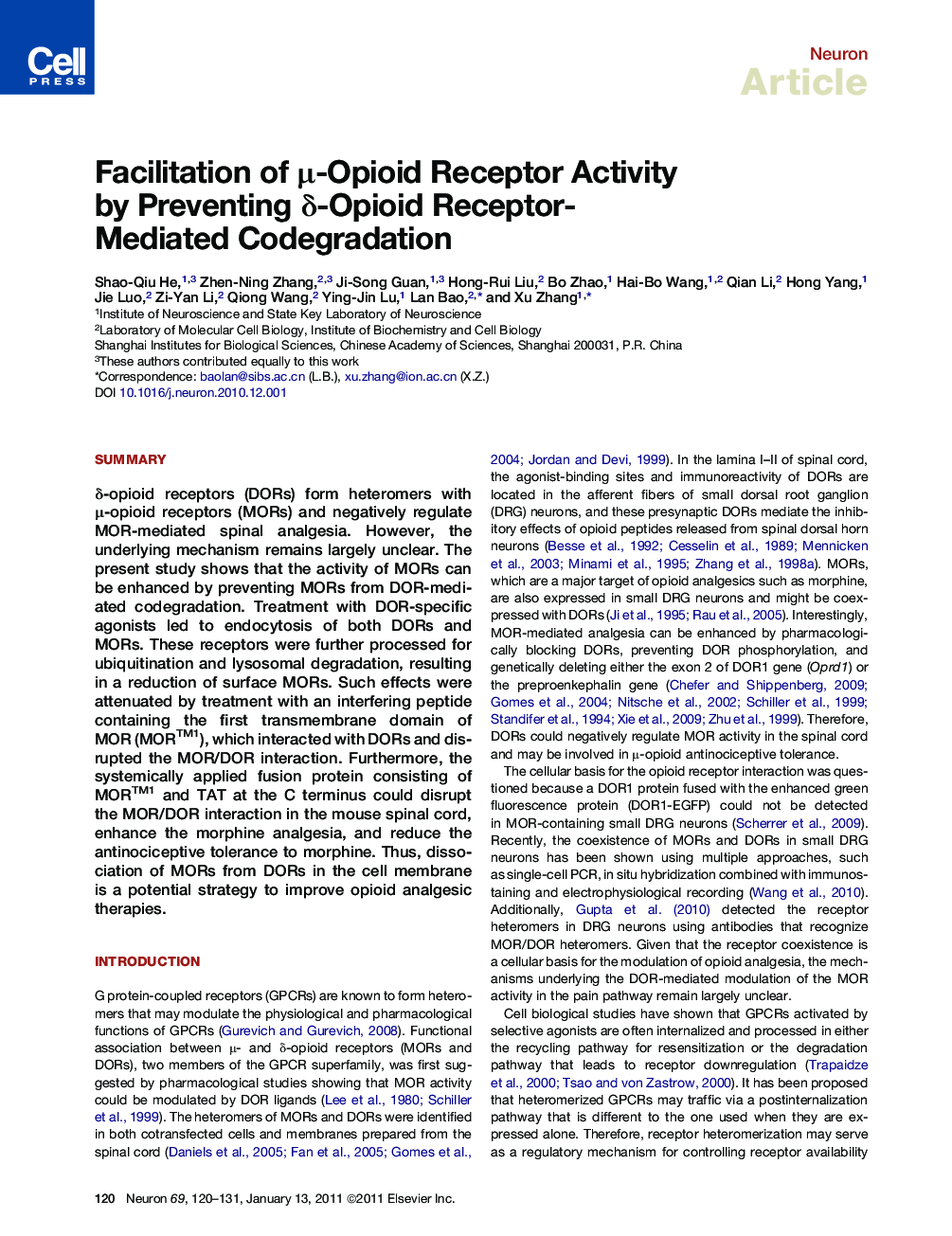| Article ID | Journal | Published Year | Pages | File Type |
|---|---|---|---|---|
| 4322294 | Neuron | 2011 | 12 Pages |
Summaryδ-opioid receptors (DORs) form heteromers with μ-opioid receptors (MORs) and negatively regulate MOR-mediated spinal analgesia. However, the underlying mechanism remains largely unclear. The present study shows that the activity of MORs can be enhanced by preventing MORs from DOR-mediated codegradation. Treatment with DOR-specific agonists led to endocytosis of both DORs and MORs. These receptors were further processed for ubiquitination and lysosomal degradation, resulting in a reduction of surface MORs. Such effects were attenuated by treatment with an interfering peptide containing the first transmembrane domain of MOR (MORTM1), which interacted with DORs and disrupted the MOR/DOR interaction. Furthermore, the systemically applied fusion protein consisting of MORTM1 and TAT at the C terminus could disrupt the MOR/DOR interaction in the mouse spinal cord, enhance the morphine analgesia, and reduce the antinociceptive tolerance to morphine. Thus, dissociation of MORs from DORs in the cell membrane is a potential strategy to improve opioid analgesic therapies.
► Activation of δ-opioid receptors (DORs) leads to codegradation of μ-ORs (MORs) ► The first transmembrane domain of MOR (MORTM1) mediates MOR interaction with DOR ► Plasma membrane-inserted TAT-fused MORTM1 dissociates MORs from DORs in vivo ► Disruption of the DOR/MOR interaction in C-afferents reduces morphine tolerance
